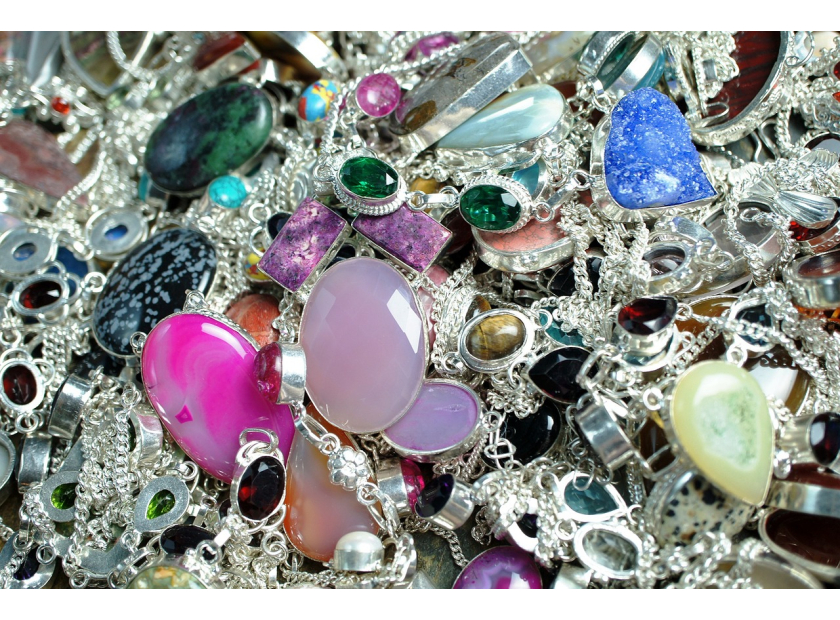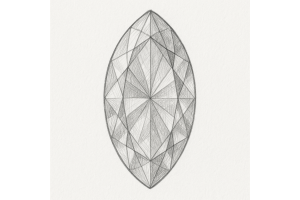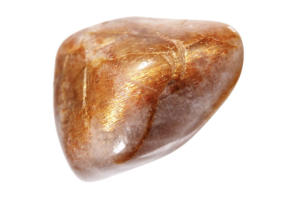GBP
/
GBP
/
Shipping to:
Currency:
What Are the Rarest Gemstones? Discover the World’s Most Elusive Jewels
Gemstones have captivated humanity for centuries, not only for their dazzling beauty but also for their rarity and the fascinating stories behind their formations.
While diamonds often steal the spotlight, there exists a world of gemstones so rare that many remain unfamiliar to the general public.
These elusive treasures, formed under unique geological conditions, are highly sought after by collectors and enthusiasts alike.
In this article, we'll delve into some of the world's rarest gemstones, exploring their origins, characteristics, and what makes them so exceptional.
Understanding Gemstone Rarity
The rarity of a gemstone is determined by several factors, including its natural formation, the limited geographic locations where it's found, and its availability in the market.
Some gemstones are rare due to the unique combination of elements required for their formation, while others are scarce because they are found in only one or two locations worldwide.
This rarity often translates to higher value and desirability among collectors and jewellery enthusiasts.
Painite: Once the Rarest Mineral on Earth
Discovered in Myanmar in the 1950s, painite was once considered the rarest mineral on Earth.
For decades, only a handful of specimens were known to exist.
This borate mineral typically exhibits hues ranging from brownish to reddish-brown and contains trace amounts of elements like zirconium and boron.
Its extreme rarity and unique composition make painite a coveted gem among collectors.
Alexandrite: The Colour-Changing Marvel
Alexandrite is renowned for its remarkable colour-changing properties, appearing green in daylight and shifting to a reddish hue under incandescent light.
First discovered in Russia's Ural Mountains in the 19th century, this chrysoberyl variety is exceptionally rare and highly prized.
The captivating optical phenomenon, known as the "alexandrite effect," adds to its allure and value.
Taaffeite: A Serendipitous Discovery
Taaffeite is an extremely rare gemstone that was first identified in 1945 by gemologist Richard Taaffe, who discovered it among a batch of spinels.
This accidental find revealed a mineral that is over a million times rarer than diamond.
Taaffeite typically exhibits hues ranging from lavender to mauve and has been found in Sri Lanka and Tanzania.
Red Beryl: The Scarlet Emerald
Also known as bixbite, red beryl is a rare variety of the beryl family, which includes emeralds and aquamarines.
Its striking red hue is due to the presence of manganese.
Gem-quality red beryl has been found primarily in the Wah Wah Mountains of Utah, USA.
Due to its limited occurrence and the small size of crystals, red beryl is considered one of the rarest gemstones in the world.
Grandidierite: The Teal Treasure
Discovered in Madagascar in 1902, grandidierite is a rare mineral that exhibits a captivating blue-green or teal colour.
Its pleochroic nature means it can show different colours when viewed from different angles.
Transparent, gem-quality grandidierite is exceptionally scarce, making it highly sought after by collectors.
Jeremejevite: The Elusive Crystal
First discovered in Siberia in 1883, jeremejevite is an aluminium borate mineral known for its hardness and typically colourless to pale blue appearance.
Gem-quality crystals are extremely rare and have also been found in Namibia.
Due to its scarcity and desirable properties, jeremejevite is a prized gemstone among enthusiasts.
Musgravite: A Collector's Dream
Musgravite was first identified in the Musgrave Ranges of South Australia in 1967.
This extremely rare oxide mineral is closely related to taaffeite and typically exhibits a greyish-green to purple hue.
Gem-quality musgravite is exceedingly scarce, with only a few specimens known to exist, making it a coveted gem for collectors.
Black Opal: The Dark Beauty
Black opal is the rarest and most valuable variety of opal, characterised by its dark body tone which enhances the vibrant play-of-colour.
The primary source of black opal is Lightning Ridge in New South Wales, Australia.
Its captivating appearance and limited geographic occurrence contribute to its high desirability and value.
Incorporating Rare Gemstones into Jewellery
For those captivated by the allure of rare gemstones, incorporating them into jewellery pieces offers a unique and personalised touch.
Whether it's an engagement ring or a statement piece, selecting a rare gemstone can make your jewellery truly one-of-a-kind.
For inspiration and a variety of options, check out gemstone engagement rings.
Frequently Asked Questions
What makes a gemstone rare?
A gemstone's rarity is determined by factors such as its natural formation process, the limited geographic locations where it is found, and its availability in the market.
Unique chemical compositions and specific environmental conditions contribute to the formation of rare gemstones.
Are rare gemstones a good investment?
Rare gemstones can be a good investment due to their scarcity and the increasing demand among collectors.
However, investing in gemstones requires thorough research and understanding of the market, as factors like provenance, quality, and market trends significantly influence their value.
How can I ensure the authenticity of a rare gemstone?
To ensure the authenticity of a rare gemstone, it's essential to obtain a certificate from a reputable gemological laboratory.
This certification provides detailed information about the gemstone's characteristics and confirms its authenticity.
Purchasing from reputable dealers and seeking expert advice can also help in making informed decisions.








